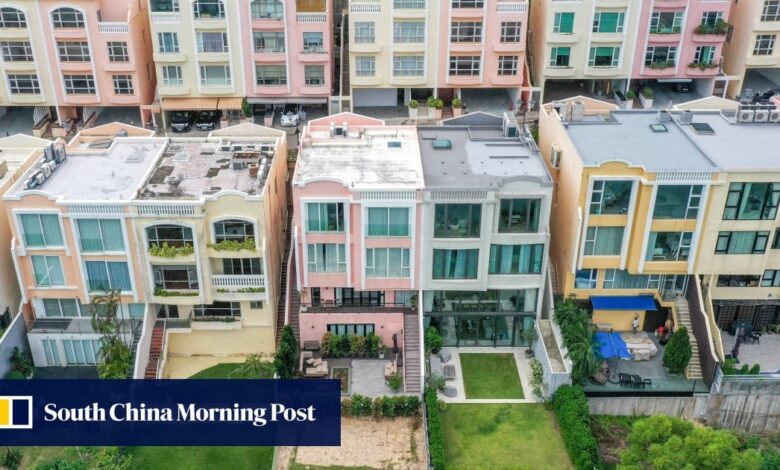Hong Kong allowing less risky illegal structures to remain temporarily at urban homes does not amount to amnesty, development minister says

[ad_1]
Hong Kong’s development minister has pushed back against the idea that allowing small illegal structures to remain temporarily at urban homes amounts to an amnesty, clarifying additions such as enclosed balconies will not be covered if authorities opt for more lenient enforcement.
Secretary for Development Bernadette Linn Hon-ho on Thursday assured the public that any relaxation in rules would not translate to authorities ending their pursuit of people suspected of significant building law breaches, such as in the high-profile cases found at Redhill Peninsula in Tai Tam.
Linn on Wednesday revealed the government was studying implementing a mechanism to allow homeowners to register illegal small-scale additions – such as supporting frames for air-conditioning units, flagpoles and outdoor drying racks – in exchange for leniency in not having to remove them immediately.
Hong Kong looks at giving homeowners with small illegal structures some leniency
Hong Kong looks at giving homeowners with small illegal structures some leniency
“If you declare drying racks and air conditioner brackets to me, I will note them down so that we don’t need to give warnings whenever people ask me about them,” she said in a radio interview.
“[But] residents must not believe that authorities will apply the registration system to your sealed terraces, or situations seen at Redhill Peninsula. It is a fantasy in every respect.”
The issue came back into focus in September when a landslide exposed unauthorised structures at four seaside homes at the luxury Redhill Peninsula in Tai Tam.
The government earlier said it had inspected 85 other homes on the estate, with 70 suspected to have illegal structures and 40 of using government land without permission.

Linn on Thursday said about 60 of the 80 houses inspected at the luxury Redhill Peninsula development were found to contain suspected unauthorised construction.
She explained the proposed mechanism would only apply to illegal structures that were not a priority for the Buildings Department, stressing the system did not amount to an amnesty.
A similar registration scheme was adopted in 2011 in the New Territories amid rampant abuse of the Buildings Ordinance, with authorities regulating rather than ordering the immediate removal of small unauthorised structures on village houses.
Unauthorised structures found at Hong Kong government adviser’s luxury home
Unauthorised structures found at Hong Kong government adviser’s luxury home
Under the arrangement, homeowners had to declare any illegal small-scale additions to the government before the end of 2012. They also had to hire registered professionals to check the structures every five years until the authorities demanded their removal.
Linn on Thursday emphasised that the government would continue to crack down on severe cases.
Hong Kong officials to seek warrants for entry to 3 homes at Redhill Peninsula
Hong Kong officials to seek warrants for entry to 3 homes at Redhill Peninsula
Chief Executive John Lee Ka-chiu in his policy address on Wednesday last week proposed amending the Building Ordinance next year to streamline prosecution procedures, stiffen penalties and lower the threshold for bringing lawsuits in a bid to tackle the illegal structures.
Linn last week said the proposal would grant the Buildings Department more power to launch prosecutions as soon as unauthorised structures were discovered.
At present, owners failing to comply with removal orders face a maximum fine of HK$200,000 (US$25,575) and one year behind bars. They can also be fined HK$20,000 each day they do not adhere to the order.
[ad_2]
Source link





